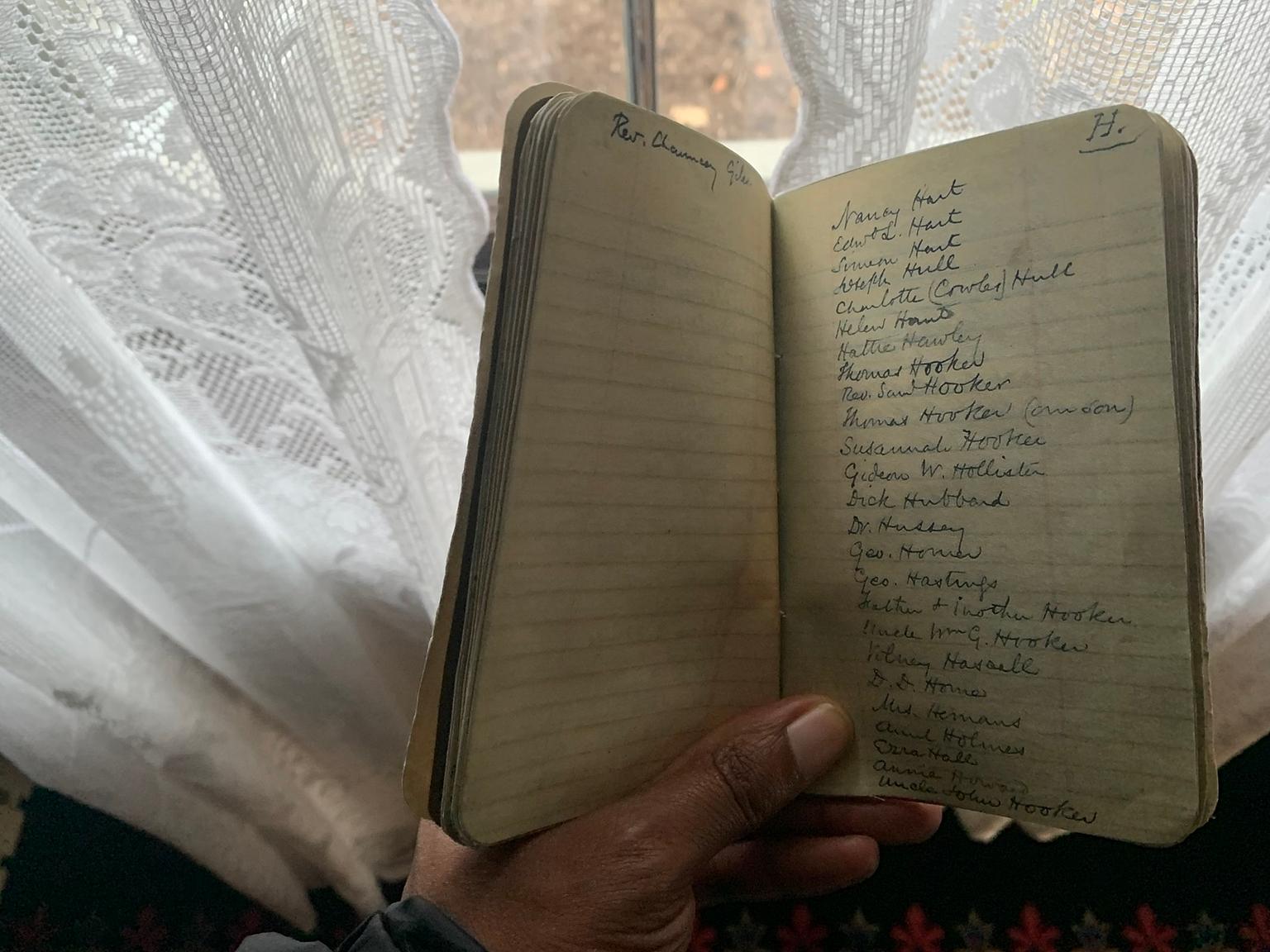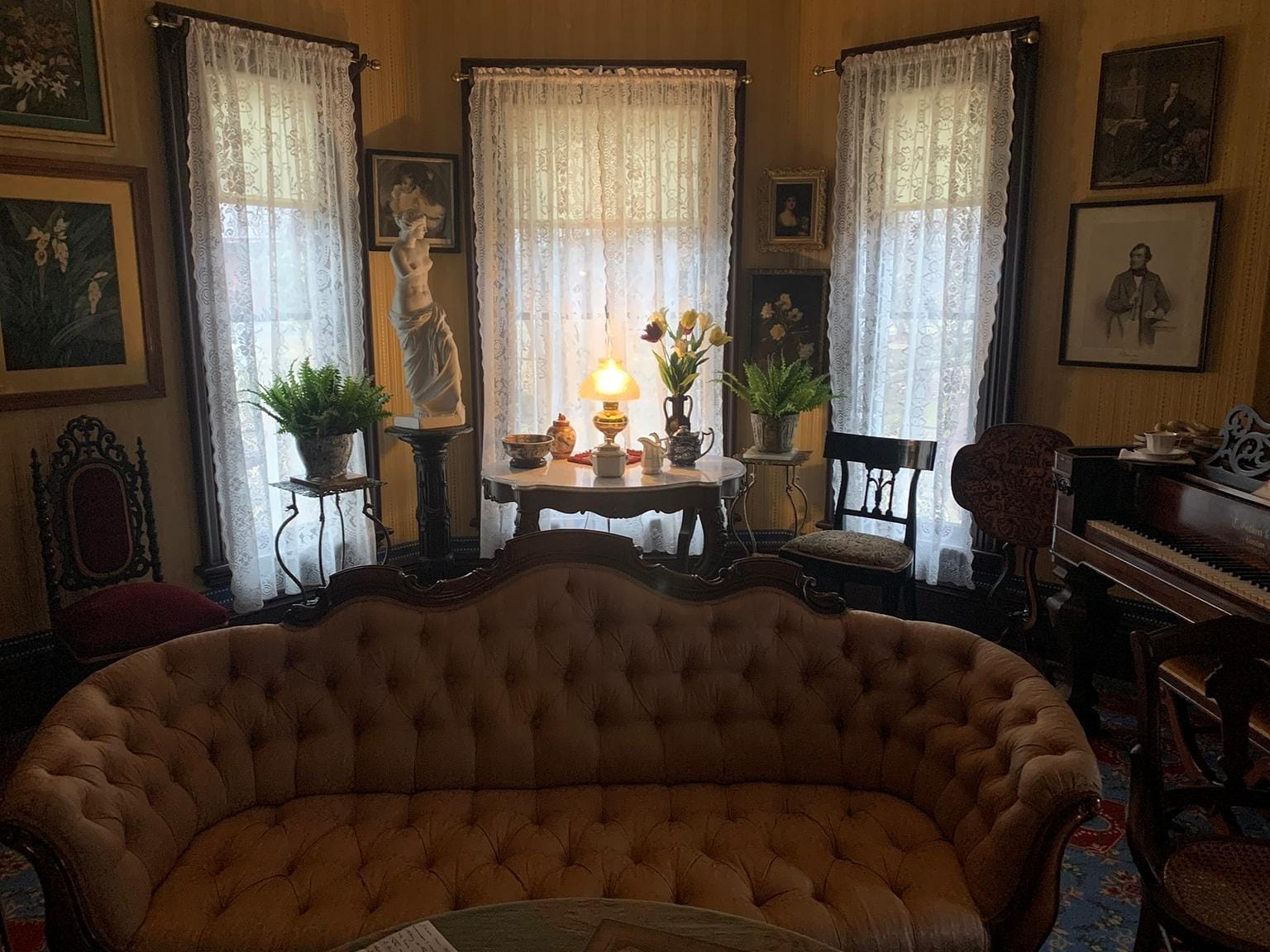Spiritualism as Resistance: Spirits at Stowe
Harriet Beecher Stowe Center
Hartford
Feb. 2, 2024
The central truth of American history is that every question you can ask has its answer in slavery. It is the foundation of the United States, predating its existence and continuing to reverberate throughout the present.
I was reminded of this fact when I went to the Harriet Beecher Stowe Center for a tour that ostensibly would focus on Stowe and her family’s roles as spiritualists in Victorian culture. But Stowe was an anti-slavery writer, and she lived in an era that was permeated by the cruelty of human bondage.
Our tour group was small. It was me, an older woman, and two high school-aged girls. The girls were there to conduct research on Stowe and her family for a project they were doing for school. They were very impressive; they took notes and asked good questions of our tour guides.
And all of their questions had the same answer.
“The spiritualism that Stowe’s sister, Isabella Beecher Hooker and her husband, John practiced was heavily influenced by the practices of enslaved people from that era,” the tour guide explained. She talked about how the Stowe house was in a highly segregated area of the city. How Connecticut was the last state in New England to ban slavery.
What does all this have to do with spiritualism? Nothing directly, except that it’s impossible to understand the relationship among religious fervor, women’s suffrage and personal independence, the idiosyncrasies of parlor culture and the place the Stowe family inhabited in all of it without the glue that held American society together, which was slavery.
Syncretic religions, or religions that combined elements of Christianity and religious traditions of the enslaved, provided the context for White women to explore channeling and seances in a way that was frowned upon by dominant culture.
I learned a great deal about the interplay between enslavement and spirituality, but not as much as our young friends on the tour. As someone with a true love of history, I can sometimes be disconnected from the present. For two high school sophomores, the centrality of enslavement to every element of American life in the 19th century is new information, just as it was for me all those years ago.
During Black History Month, we walk a fine line. We don’t want the entirety of the Black experience reduced to our experience with the institution and legacy of enslavement. But as the tour demonstrated, it’s impossible to separate the spirituality of the era from the struggles for rights of freedmen and women, suffragettes and other marginalized people.
One of the most interesting aspects of the tour was when the tour guide explained that women were seen as having a more “direct” connection with the spiritual world, and often served as mediums and channelers. They used this to couch critiques of the unfairness of American society in otherworldly messaging; they were simply channeling certain ideas.
Spiritualism may have tried to connect living people to the hereafter, but it was very much influenced by the forces of the ear. It was a fascinating tour, and I recommend that people take it, and do so with an open mind and ear.

NEXT
The Harriet Beecher Stowe Center hosts a Social Justice Reading Circle on Feb. 14th.
Jamil heads to Parkville to rekindle his competitive gaming spirit.






